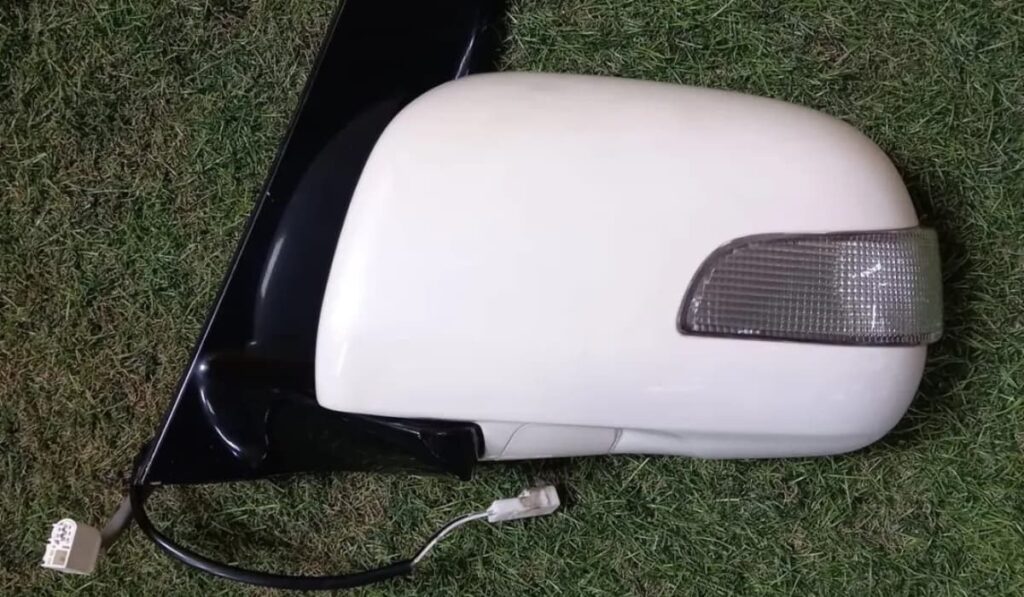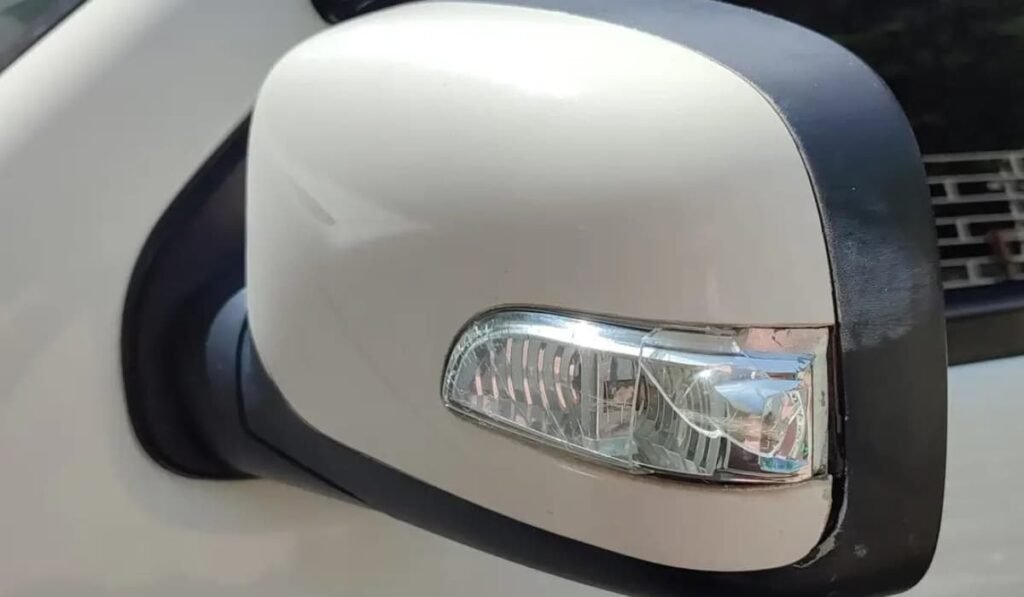Side mirror turn signals are critical safety features of your car. They communicate your upcoming plans to other road users, particularly when making turns or changing lanes. This communication method helps keep yourself and others safe on the road.
However, the turn signals on side view mirrors may malfunction due to several reasons. If your car has multiple electrical connections, finding the cause of this problem can be nerve-wracking. But worry not.
Herein, I provide the common reasons for the side mirror turn signal not working and how to address each issue. But first, let’s highlight the possible symptoms of a failing side mirror turn signal.
Answer: Symptoms of Malfunctioning Side Mirror Turn Signals
Symptoms of the turn signals on side mirrors not working include the following:
- Side mirror turn signals not coming on
- Side mirror turn signals not turning off
- Side mirror turn signals not flashing
- The dashboard indicator is not flashing
- Lights flashing too fast or slow

Answer: Reasons for Side Mirror Turn Signal Not Working
Here are the leading causes of the side mirror turn signal failing to work.
Malfunctioning Turn Signal Lights
Most modern cars use LED turn signals on the side mirrors. LED turn signal lights last way longer and draw less power than the standard filament bulbs. Unlike filament lights, LED lights on the side mirror age over time, get dimmer, and eventually stop working.
On the other hand, filament bulbs can burn out and stop working due to electrical surges or aging. Whether your car uses LED or incandescent lights on the side mirrors, they will malfunction over time.
Access the light bulbs if your car’s side mirror turn signal is not coming on or flashes too slowly. You’ll need to open the mirror’s housing to access the lights. A multimeter can help you test the LED lights to know if they’re okay.
Burnt-out or damaged incandescent bulbs may have broken filaments, or the bulbs may appear dark. If the turn signal lights are defective, replacing them can help resolve the problem.
Blown Fuse
Turn signals rely on a fuse to receive the appropriate electrical current. If the turn signal fuse blows out, the turn signal lights won’t come on or flash.
Like other fuses in your car, the turn signal fuse may blow out due to an overcurrent. Issues like a short circuit or faulty alternator can create an electrical surge and blow out the fuse. The fuse blows out to cut electric power flowing to the turn signal lights. This protects the lights from blowing out.
When fixing this issue, disconnect the battery to prevent short-circuiting and blowing out other fuses. Then, locate the problematic fuse in your vehicle’s fuse panel. The owner’s manual will help you locate the fuse box and the turn signal fuse.
Examine the fuse for any physical damage, such as melted or broken metal ribbon in the fuse. Your multimeter can also be helpful if you can’t see any signs of physical damage. A blown fuse indicates a reading higher than 5 Ohms on the multimeter.
If you have a damaged turn signal fuse, use an automotive fuse puller to remove it from the panel. Replace this fuse with a new fuse and ensure it has the correct current rating. Installing a high current rating fuse may burn out the turn signal lights or cause a fire.
Faulty Wiring and Connections
Another cause of the side mirror turn signal not working is faulty wiring and connections. The side mirror turn signals rely on connectors and wires to receive electric signals.
Wires in the side mirror may become frayed or broken as the mirror moves in and out. Moreover, issues like bumpy rides, hitting objects, or accidents can damage the wires and cause connections to become loose.
Loose connections can produce sparks and damage the entire system. If you suspect wires and connections are the culprit, replace them immediately. You’ll need to access all the wires and connectors and inspect them for damage. Use the manual to locate them.
You can start with the wires and connectors in the mirror housing. Replace them if damaged and use an electric appliance tape to hold the wires together. Check the connection points and clean them to remove dust or corrosion. Then, secure the connections as tightly as possible.
Lastly, consider the help of a professional technician if you can’t find the defective wires or connections in the car.
Corroded Bulb Sockets
Bulb sockets in your car’s side mirrors get corroded, hindering electricity transmission. If the bulbs don’t get enough current, they may fail to turn on or flash too slowly.
The possible causes of corroded bulb sockets are dirt, moisture, and electrical surges. Dirt and moisture may seep through the openings, especially if the side mirror housing has cracks.
When dirt and water accumulate around the sockets, they may cause corrosion and hinder current transmission. Electrical surges can cause overheating in the socket and result in corrosion.
Open the mirror assembly and remove the malfunctioning bulb. Check the socket for signs of dirt or corrosion preventing electrical contact. Clean the sockets with a wire brush to remove the rust. You can also dip cotton swabs in white vinegar and use them to clean the corroded sockets.
Defective Turn Signal Switch
The turn signal switch, also known as the turn signal lever, blinker switch, or turn signal arm, attaches to the steering column. This is the switch you press to activate the side mirror turn signals.
Excessive use, electrical surges, or an accident can trigger issues in this switch, leading to failure. A defective turn signal switch may cause the turn signal not to come on or turn off. Your digital multimeter can help you diagnose the switch to know if it’s working.
If you have a defective turn signal switch, it’s best to hire a professional to repair or replace it.
Faulty Alternator
The alternator and the battery power electrical appliances in your car while driving or idle. A defective alternator won’t power the side mirror signal lights or charge the battery. The signal lights and other appliances will use battery power and cause it to drain faster.
Examine the alternator and battery to ensure they’re in good condition. Use your multimeter to check for a defective alternator and replace it if necessary. Then, examine the battery for signs of corrosion on the terminals. Clean the terminals to remove the corrosion.
Next, examine the battery connections and the alternator wirings to ensure they supply current as expected. Tighten the terminal connections with a battery terminal wrench. Replace any worn or broken battery and alternator wires.

Wrapping Up
The side mirror turn signal not working may result from several issues. It may malfunction due to a blown fuse, wiring problems, a defective turn signal switch, or a faulty alternator.
Examining these components can help you get to the root of the problem. Thankfully, you can troubleshoot most of these issues with a few basic skills. If you encounter challenges fixing the side mirror turn signal, call a specialist to do the job.